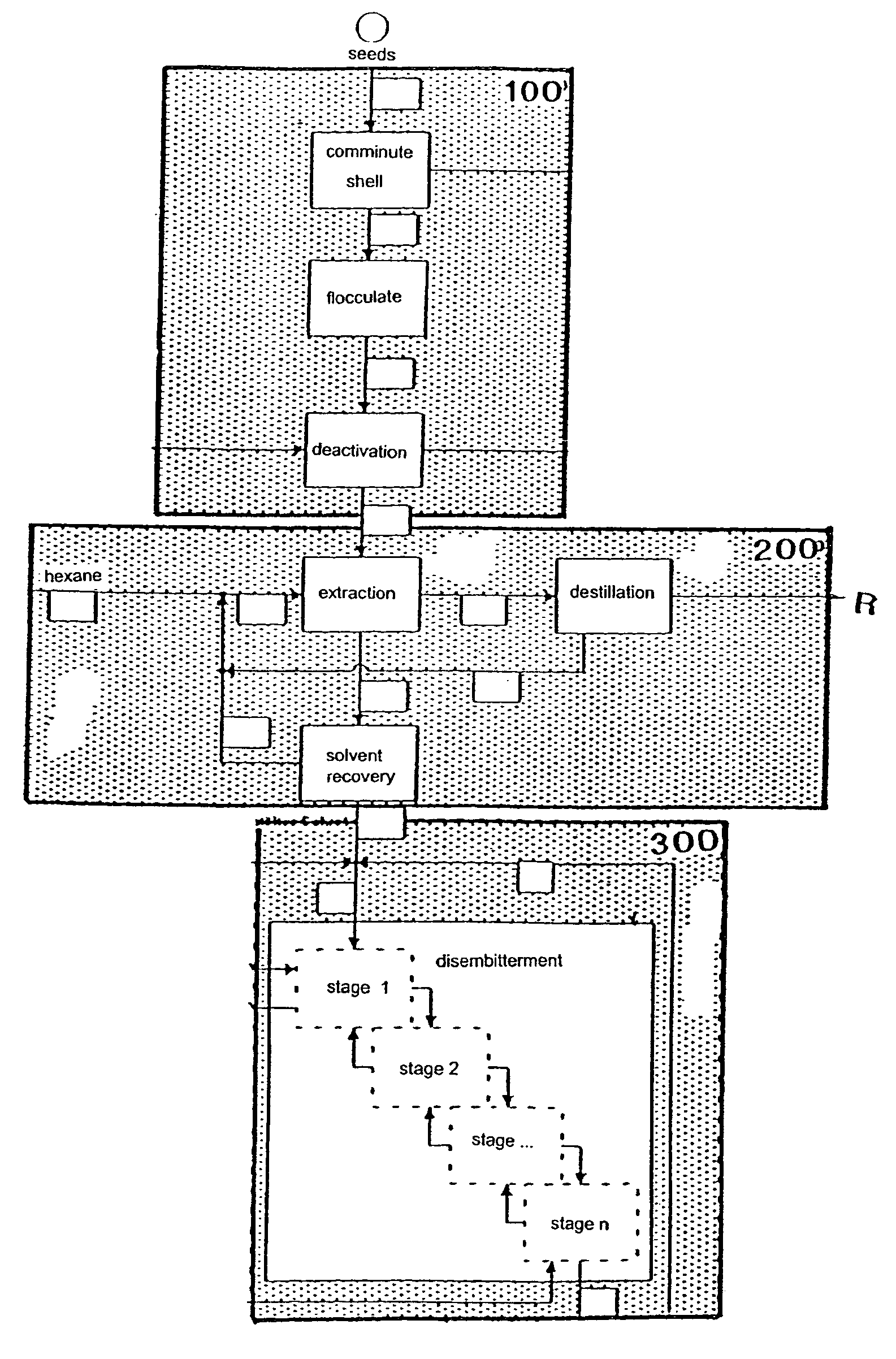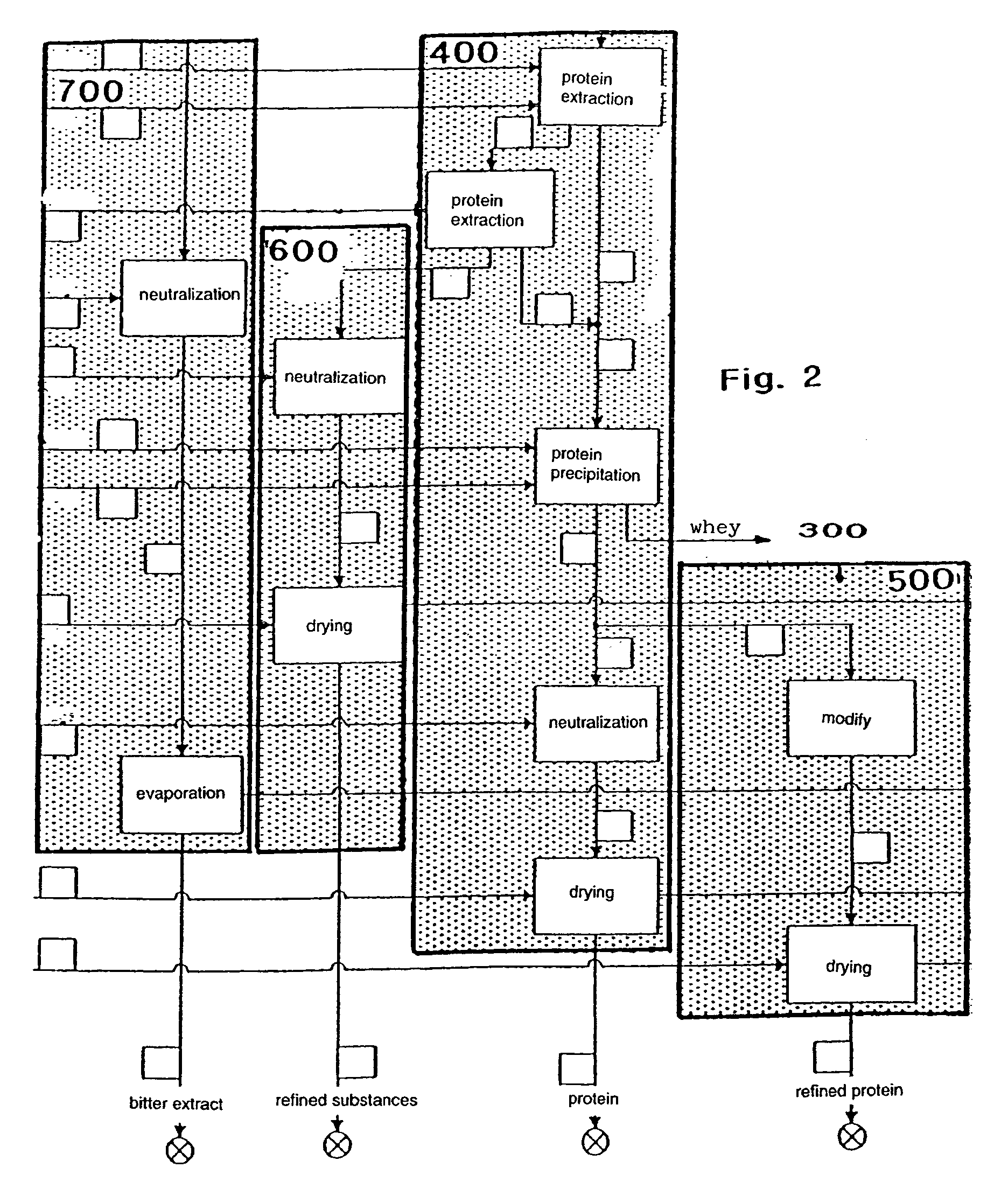Method for treating and processing lupine seeds containing alkaloid, oil and protein
a technology of lupine seeds and alkaloids, applied in the field of treating and processing alkaloids, oil and protein-containing lupine seeds, can solve the problems of complex filtering steps, less easy extraction of substances from grit-shaped lupine seed fragments to be disembittered, and high cost of process engineering and process engineering. , to achieve the effect of improving the degree of disembittering of lupine seeds, the smallest technological
- Summary
- Abstract
- Description
- Claims
- Application Information
AI Technical Summary
Benefits of technology
Problems solved by technology
Method used
Image
Examples
Embodiment Construction
[0032]FIG. 1 illustrates a block schematic of the first three process steps. In the first process step 100 the lupine seeds are prepared, in the second process step 200 de-oiling takes place, and in the third process step 300 disembitterment is carried out.
[0033]The starting material for the method is lupine seed that is comminuted and shelled in a preparatory step. The lupine seeds isolated in this manner are then flocculated, preferably in the course of a rolling operation, which means that the lupine seeds are pressed to form seed fragments having a typical platelet thickness between 300 and 400 μm. The flocculating roller used for the rolling operation is cooled, not least in an approach to enhance the efficiency of the comminuting operation.
[0034]After comminution, the flakes arrive in a heat pan where they are subjected to indirect thermal treatment. Even though this thermal introduction of heat deactivates, on the one hand, the seed-inherent enzymes, the native properties of ...
PUM
 Login to View More
Login to View More Abstract
Description
Claims
Application Information
 Login to View More
Login to View More - R&D
- Intellectual Property
- Life Sciences
- Materials
- Tech Scout
- Unparalleled Data Quality
- Higher Quality Content
- 60% Fewer Hallucinations
Browse by: Latest US Patents, China's latest patents, Technical Efficacy Thesaurus, Application Domain, Technology Topic, Popular Technical Reports.
© 2025 PatSnap. All rights reserved.Legal|Privacy policy|Modern Slavery Act Transparency Statement|Sitemap|About US| Contact US: help@patsnap.com



